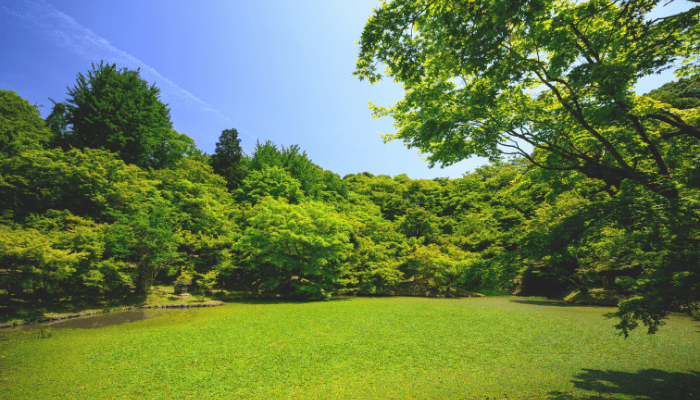Key Takeaways
Garden meditation uses plants and outdoor space as a calming anchor, offering a full‑body reset without the pressure of formal practice.
Simply sitting among greenery and tuning into your senses – light, texture, scents, and sounds can lower stress, reduce cortisol, and sharpen focus.
You don’t need elaborate props. A quiet corner, an intention, and a few minutes of mindful attention are enough.
To design a meditation garden, prioritize quiet spots, layered textures, sensory plants like lavender or rosemary, and minimal, grounding elements such as rocks or water features.
Mindful gardening takes it further by engaging actively with the space: pulling weeds, tending soil, and observing growth with patience and presence.
Simple accessories like a cushion, gentle chimes, or soft lighting can enhance the ritual but aren’t required.
Ultimately, garden meditation isn’t about perfection or productivity. It’s about showing up, slowing down, and letting your outdoor space remind you how to be still.
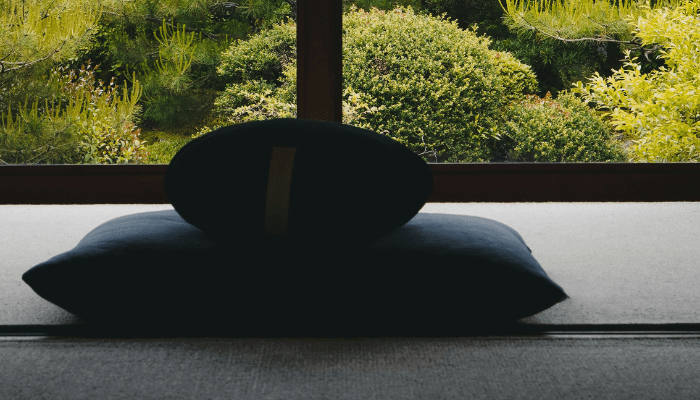
Garden meditation is not just sitting cross-legged in lotus pose beside your hydrangeas. It’s a full-body reset. A kind of therapy that doesn’t require a therapist, just plants, space, and your presence.
In a world where your phone buzzes more than a beehive, it makes sense that more people are turning to their backyards, balconies, or even indoor plants for peace. According to Google Trends, searches for “meditation garden” and “mindful gardening” have surged over the last 3 years. Translation? People are ditching Zoom fatigue for zinnias and finally admitting that we’re all just plants with complicated emotions.
So how do you start? How do you create a space that quiets the noise, both literal and mental? This guide is for you: the burned-out, the overbooked, the curious, and the calm-curious. We’re digging deep (pun intended) into how you can use your outdoor space, no matter how small, to recenter, refocus, and maybe even stop doom scrolling for five minutes.
Let’s get our hands dirty, in the most mindful way possible.
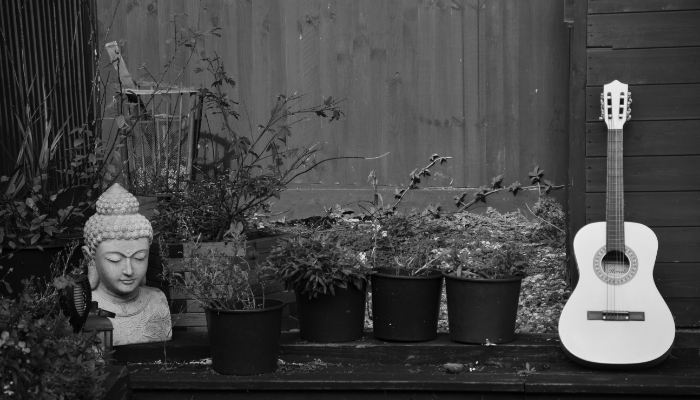
What is Garden Meditation?
Garden meditation is exactly what it sounds like — and also, a bit more than that. It’s the art (and science) of using your garden as a sacred space for stillness, breathwork, and quiet observation. You don’t need incense, a Buddha statue, or a $400 bench imported from Kyoto. You just need a patch of earth and a willingness to slow the hell down.
At its core, garden meditation is about tuning into your senses. Feeling the warmth of sunlight on your skin. Noticing the texture of leaves. Breathing in the sharp, clean scent of rosemary. It’s nature helping you notice yourself.
And the benefits? They’re not just poetic. Studies show that time in nature reduces cortisol, lowers blood pressure, and improves cognitive focus. Translation: it calms your stress and helps you stop mentally replying to emails while brushing your teeth.
Meditating in a garden feels less intimidating than on a cushion indoors. You’re not trying to be a still statue in a silent room. You’re just existing in the presence of something real. Something alive. Something that doesn’t ask for anything in return.
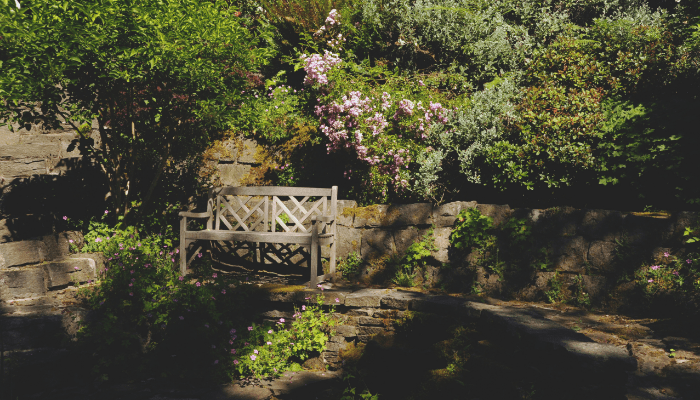
How to Practice Garden Meditation (Step-by-Step)
You don’t need to overthink this. Seriously. No apps required. Just follow this flow:
- Pick Your Spot
Doesn’t matter if it’s a wild backyard, a balcony herb box, or a rented patch of lawn. Look for somewhere with a little peace. Even a small, shady corner counts. - Set an Intention
You don’t need a mantra (unless you want one), but do enter with a focus. Maybe it’s gratitude. Maybe it’s letting go of frustration. Maybe it’s just “stay here for five minutes.” - Engage the Senses
Notice what you can see, hear, feel, and smell. Close your eyes. Open them again. Listen to the tiny sounds that get drowned out during your usual scroll-fest. - Anchor Your Attention
Pick a single point of focus. The breath is great. But so is the curve of a petal. The rhythm of wind in the trees. The stillness of a stone. - Let Your Mind Wander (Then Bring It Back)
Distraction is part of the process. When it happens (and it will), gently return to your anchor. No shame, no judgment, just awareness. - Close With Stillness or Movement
Either sit in silence for a moment or walk slowly through your garden. Don’t rush to “get back” to anything. This was the thing.
That’s it. No gong. No ritual. Just you and a living environment.
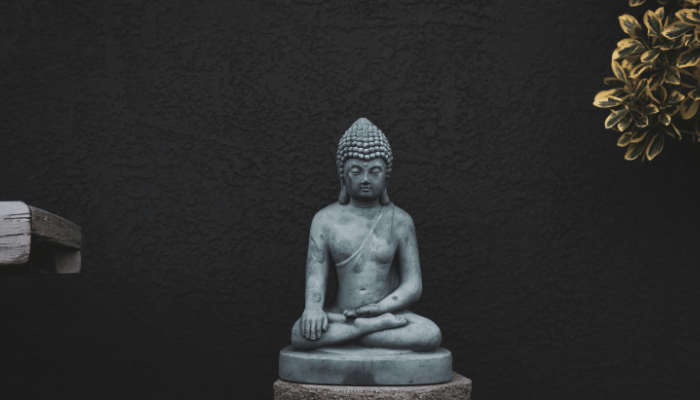
Designing Your Own Meditation Garden
Now, let’s say you want to take this a step further. You don’t just want to meditate in your garden. You want to build a garden that invites meditation. Here’s how.
Location First
Look for quiet. Some place shielded from wind, neighbors, and lawnmowers. A small nook. A corner with morning light. It doesn’t have to be fancy. It just has to feel safe and undisturbed.
Think in Layers
Start with structure: maybe a bench, a rock, or a simple path. Then add texture: gravel, bark, moss, or stepping stones. Finally, plant your layers: tall grasses for movement, herbs for scent, shade plants for softness.
Go Green and Grounded
Skip the showy roses unless you’re ready to baby them. Think lavender, rosemary, salvia, ornamental grasses, jasmine, or hostas. These plants aren’t just pretty — they’re sensory tools.
Less is More
Seriously. Don’t turn your meditation garden into a home-and-garden exhibition. You’re not here to impress. You’re here to exhale.
Add One Living Element
A bird bath. A bee hotel. A small fountain. Something that reminds you this isn’t just your space — you share it.
Add Shade and Shelter
Create a partial enclosure. A pergola, a tree, or a bamboo screen can work wonders. Enclosure makes you feel protected. It helps your brain relax.
Your meditation garden doesn’t need to be perfect. It just needs to make you pause.
What is Mindful Gardening?
If garden meditation is about being in the space, then mindful gardening is about interacting with it. Consciously. Gently. Without multitasking.
Pulling weeds without a podcast in your ears. Digging soil and feeling its texture instead of powering through it like a CrossFit circuit. Observing your plants instead of judging them for not blooming yet. That’s mindful gardening.
It’s a slower way of doing. A rhythm that invites presence instead of productivity.
Key practices include:
- Focusing on one task at a time.
- Checking in with the garden every day, even for 60 seconds.
- Listening. Literally. Plants don’t speak, but they do tell you things.
- Accepting imperfection (your basil may bolt, your compost might smell weird – that’s life).
This is gardening as meditation-in-motion. And bonus: the garden usually looks better when you actually pay attention.
You’re not tending a yard. You’re tending your awareness.

Tools and Accessories to Elevate the Practice
Let’s be clear: You do not need gear to meditate in a garden. But if you’re the kind of person who likes to build rituals, here are a few additions that can deepen the vibe.
- A weatherproof meditation cushion (or a flat rock works)
- Chimes or bells for gentle sound cues
- A small water feature for soothing background noise
- A garden journal to reflect after sessions
- Soft outdoor lighting for early morning or twilight practices
- Essential oils or incense (if bugs aren’t your thing)
- A grounding mat or barefoot path to connect physically to the earth
None of this is mandatory. In fact, the fewer distractions, the better. But if adding a few comforts helps you show up consistently, it’s worth it.
Because this isn’t about building a garden to look at. It’s about building a garden to be in.
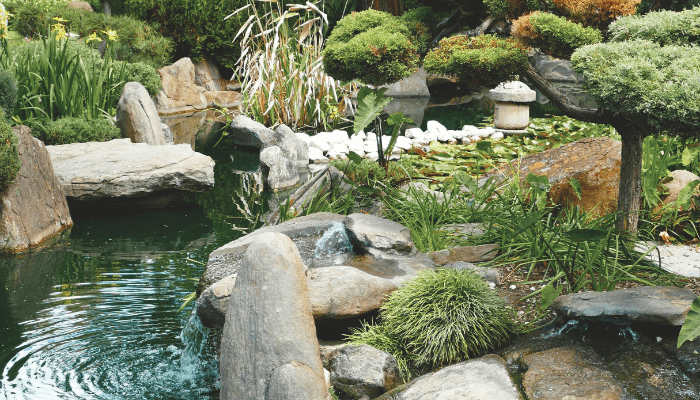
Conclusion
Your garden doesn’t care how long your to-do list is. It’s not bothered by deadlines, Slack pings, or whatever fresh chaos showed up in your inbox today. It just grows, slowly, quietly, without asking for attention (unless you forget to water it, and then yes, it will die dramatically).
That’s the gift of garden meditation. It’s not about performance. It’s about presence.
Whether you’re crouched beside a rosemary bush, walking barefoot through the grass, or pulling weeds with intention instead of rage, what you’re really doing is returning to something simple. Something ancient. Something your nervous system has been begging you to remember.
Start small. Pick one plant to sit with. Observe it. Breathe. Be weird about it. No one’s watching.
And if your garden is just one stubborn pothos on a windowsill? Perfect. Meditation isn’t about location, it’s about showing up. Again and again. Quietly. Imperfectly. Mindfully.
Now go outside. Your brain could really use the silence.
Design a space that lets you exhale.
At Oásis Biosistema, we create regenerative gardens and water features that invite stillness, presence, and peace.
FAQ
What is garden meditation?
Garden meditation is a mindfulness practice that takes place outdoors, using the sights, sounds, and sensations of a garden to focus the mind. It helps reduce stress, improve mental clarity, and deepen your connection with nature. This form of meditation combines stillness with natural beauty for a calming, grounding experience.
How do you meditate in the garden?
To meditate in the garden, find a quiet spot, sit comfortably, and focus on your breath or the sounds of nature. Let go of distractions and observe the environment—rustling leaves, bird songs, or the feeling of sunlight. Use the garden’s sensory elements to stay present and enhance mindfulness.
Can you meditate while gardening?
Yes, you can meditate while gardening by practicing mindful awareness during each task. Focus fully on movements like digging, planting, or watering. Pay attention to textures, smells, and sounds. This form of active meditation brings relaxation and presence, turning routine garden work into a calming, meditative ritual.
How to do nature meditation?
To practice nature meditation, sit or walk in a natural setting and focus on your senses. Observe sounds, smells, and sights without judgment. Use your breath to anchor your attention. This simple yet powerful technique reduces stress, boosts mood, and reconnects you with the natural world.


